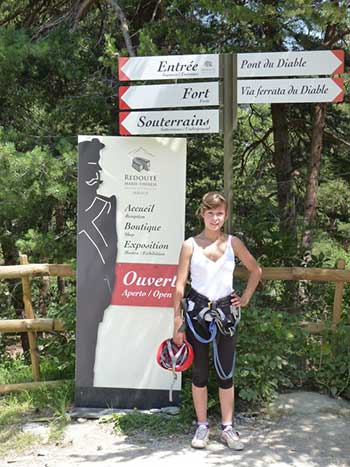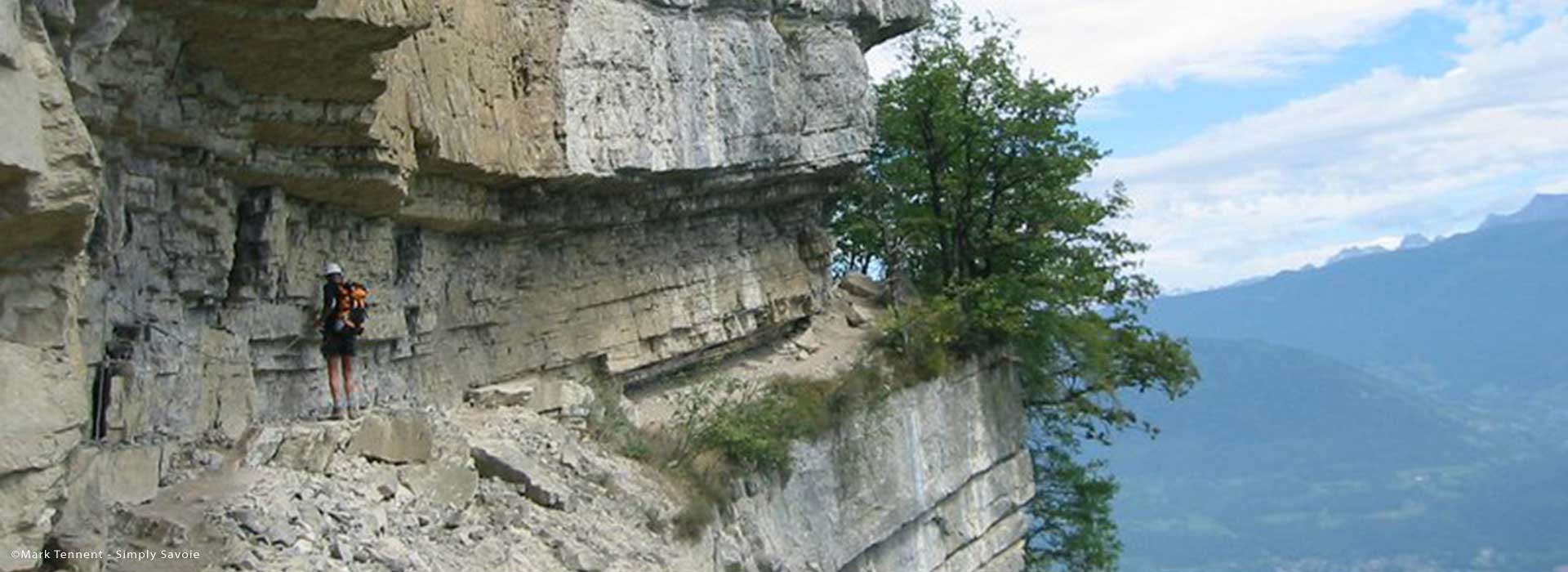
All About Via Ferrata
An historic sport growing in popularity
Via ferrata don’t require all the techniques of rock climbing, making them accessible to a wide range of people. In addition to the standard metal rungs and ladders there are also ‘Tyroléan’ and ‘monkey’ traverses, ‘Nepal’ bridges and other fun elements. In France via ferrata have become very popular with those in search of sporting activity, and there are via ferrata to suit all tastes and aspirations. That said, you should never under-estimate the great danger (with potentially extremely serious outcomes) of failing to follow simple, but fundamental principles.
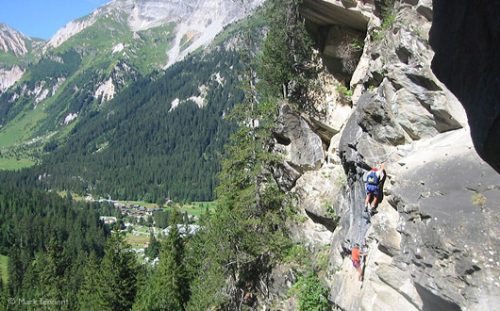
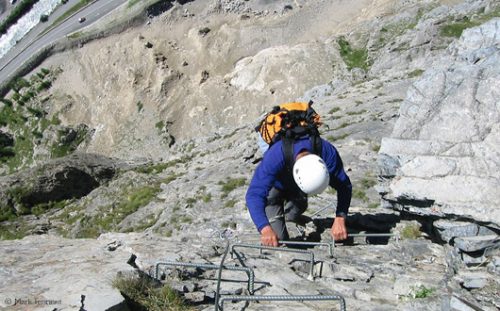
Where are the via ferrata?
France has a large number of via ferrata, mainly located in the Alpine regions, although they can also be found in Corsica and the Maritime Alps. There are now well over 100 via ferrata in France and the number is growing.
Typically sited high in the mountains, via ferrata sometimes reach the tops of peaks up to 2500m in altitude. However, some are located in almost urban settings, or in spectacular river gorges.
Who is the activity suitable for?
Via ferrata are suitable for anyone physically fit and active. Clearly you need a head for heights, but by choosing a suitable via ferrata the exposure (the feeling of being high up) can be reduced. The main advice is to choose a route that is within your capabilities.
Children
Via ferrata can be undertaken with children but should be chosen particularly carefully. Some via ferrata have been specially adapted by making hand and footholds closer together and cables are within easy reach. Children should normally be roped up in the same manner as for a conventional rock climb. This ensures that they can never accidentally unclip themselves from the via ferrata. It also allows the leader to provide additional reassurance from the rope – perhaps giving a ‘tight’ rope or a little assistance on more physical sections.
Grading/difficulty
Via ferrata in France are graded in the same way as Alpine climbs (although the respective grades are not comparable). The easiest is PD (Peu Difficile – literally ‘a little difficult’). At the top end there is ED (Extrèmement Difficile or ‘extremely difficult’). The grade is a function of the ‘exposure’ (le gaz) i.e. the feeling of being very high over a large drop.
How physically demanding is the via ferrata? Is it very steep or even slightly overhanging (en devers)? Another factor to take into account when choosing a via ferrata is its duration. There are some which may only take 30 minutes, while others can take many hours, followed by a descent from a mountain top. Some via ferrata may have marked escape routes which allow you to either avoid certain sections or to cut the route short.
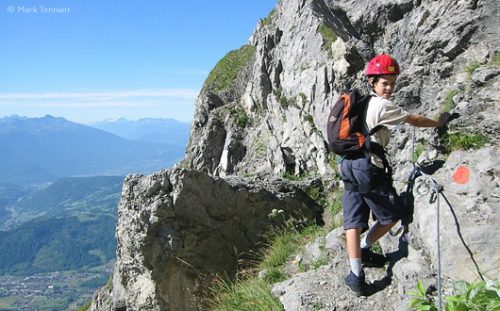
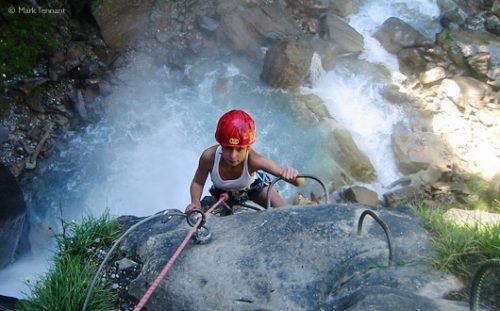
Technique
The key technique for via ferrata is one fundamental to your safety: it is imperative that you are always attached to the main cable (or ‘life line’) at all times by at least one of the karabiners attached to the via ferrata set. As you move along the karabiners will slide along the cable with you. When you come to a point where the cable is attached to the rock you will need to move one karabiner at a time on to the new section of cable. This ensures that you are always attached and therefore protected.
Resting
You may find your arms getting tired, so the ability to take a rest is useful. Some via ferrata sets have a third, short sling which can be clipped into a metal rung so that you can rest, (or take photographs). If your via ferrata set doesn’t have this you can make one using a standard climbing sling and large HMS / Klettersteig karabiner. This is only for resting and not used during normal progression since it is not integrated into the shock-absorbing system.
Precautions
Let someone know in advance where you are going and when you intend to be back, or arrange to call them to let them know you are down and safe.
Thoroughly check your equipment each time for damage and wear and tear.
Remember you are only as strong as the weakest link in your party. The more people in the group, the longer the via ferrata is likely to take, and if one person is struggling physically the whole party will be delayed.
Weather
Check the weather forecast before you go. Being caught out in a thunderstorm on a via ferrata with a wet, metal cable is not something to contemplate. During the summer the weather in the Alps is often best in the morning. In the afternoon it is quite common for large cumulus clouds to develop, and these may go on to become thunderclouds. It’s best to make an early start so that you are down before any potential changes in the weather.
